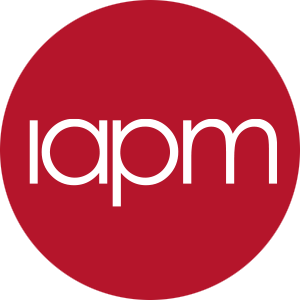Time management in virtual teams
Virtual teams face daily challenges such as delegating tasks, answering questions and reaching someone by phone. Without careful coordination, time management can quickly deteriorate. Effective communication is essential for virtual teams. But what other hurdles must be overcome, and how can they be successfully navigated?

Content
Challenges of Time Zones in Projects
One of the main challenges of time management in international projects is navigating different time zones. While it may be 8 a.m. in Germany, team members in the US may still be asleep, while colleagues in Australia may already have finished work for the day. This makes coordination considerably more difficult. Therefore, having a well-organised collaboration system in place that enables seamless work without delays is even more important. Digital tools can play a key role in supporting this.
Online tools for better coordination
Digital tools promote teamwork by enabling collaborative task and project management, for example. They should offer features that simplify communication and coordination. The nature of each task, as well as the individual needs and working styles of team members, must be taken into account. For instance, it could be agreed that weekly video conference meetings will be held.
Another key aspect is how easily information about projects and tasks can be shared. It is particularly useful if editing rights can be assigned individually. This makes it clear who is allowed to work on, access or comment on a task.
Team communication also plays a crucial role. As well as comment functions, direct messaging options such as email, phone calls and video conferencing should be available. A well-structured communication platform is essential for ensuring information flows smoothly.
Ideally, all relevant documents and data should be stored directly within the tool so that they are accessible to everyone at any time. Cloud-based storage systems offer major advantages here, allowing collaborative editing, saving and sharing of files. However, it is essential to comply with GDPR regulations to ensure data protection and security.
An integrated absence management feature is also important. This is especially important for fully virtual teams, as it helps to ensure that everyone knows who is available. This helps to avoid unnecessary waiting times and ensures that time is used effectively.
Time tracking is another central aspect for both employees and managers. When working from home, the boundaries between work and leisure can easily become blurred. Transparent time recording helps maintain an overview and structure working hours more effectively.
To ensure long-term efficiency and satisfaction, the tools used should be regularly reviewed and developed. This involves measuring performance, productivity and satisfaction, collecting feedback and comparing results with set goals. Regular reviews help identify areas for improvement.
Another key aspect is how easily information about projects and tasks can be shared. It is particularly useful if editing rights can be assigned individually. This makes it clear who is allowed to work on, access or comment on a task.
Team communication also plays a crucial role. As well as comment functions, direct messaging options such as email, phone calls and video conferencing should be available. A well-structured communication platform is essential for ensuring information flows smoothly.
Ideally, all relevant documents and data should be stored directly within the tool so that they are accessible to everyone at any time. Cloud-based storage systems offer major advantages here, allowing collaborative editing, saving and sharing of files. However, it is essential to comply with GDPR regulations to ensure data protection and security.
An integrated absence management feature is also important. This is especially important for fully virtual teams, as it helps to ensure that everyone knows who is available. This helps to avoid unnecessary waiting times and ensures that time is used effectively.
Time tracking is another central aspect for both employees and managers. When working from home, the boundaries between work and leisure can easily become blurred. Transparent time recording helps maintain an overview and structure working hours more effectively.
To ensure long-term efficiency and satisfaction, the tools used should be regularly reviewed and developed. This involves measuring performance, productivity and satisfaction, collecting feedback and comparing results with set goals. Regular reviews help identify areas for improvement.
Communication Plans for Time Efficiency
A well-thought-out communication plan is essential for improving time efficiency within the team. This includes clearly defining working hours and availability, taking different time zones into account. Meetings should be scheduled at times that are as convenient as possible for everyone. It should also be understood that immediate responses cannot always be expected if someone is offline.
Consistency and routine can help to structure workflows while accommodating individual preferences. It is important to strike a balance between flexibility and structure, as well as between synchronous and asynchronous communication.
Regular meetings, such as weekly video conferences, ensure that all team members are kept up to date. These meetings strengthen the sense of community and facilitate the quick resolution of any misunderstandings that may arise from written communication.
To make communication efficient, clear rules should be established: project goals, scope and expected outcomes should be communicated transparently. Information should be organised by topic, project or task to avoid irrelevant content overwhelming users.
Dashboards can further support collaboration by displaying the status of individual tasks visually, for example, 'in preparation', 'in progress', or 'completed'. This helps everyone involved to keep track of progress.
Another important element is an open feedback culture. Feedback should be given and solicited regularly to foster trust, transparency, and mutual learning. Recognition and appreciation are just as important as constructive criticism, which should always be respectful, timely and based on objective facts.
Finally, recognizing achievements and successes should also be part of the communication plan. Celebrating shared successes boosts team spirit, motivates the group, and contributes to time efficiency and overall satisfaction.
Consistency and routine can help to structure workflows while accommodating individual preferences. It is important to strike a balance between flexibility and structure, as well as between synchronous and asynchronous communication.
Regular meetings, such as weekly video conferences, ensure that all team members are kept up to date. These meetings strengthen the sense of community and facilitate the quick resolution of any misunderstandings that may arise from written communication.
To make communication efficient, clear rules should be established: project goals, scope and expected outcomes should be communicated transparently. Information should be organised by topic, project or task to avoid irrelevant content overwhelming users.
Dashboards can further support collaboration by displaying the status of individual tasks visually, for example, 'in preparation', 'in progress', or 'completed'. This helps everyone involved to keep track of progress.
Another important element is an open feedback culture. Feedback should be given and solicited regularly to foster trust, transparency, and mutual learning. Recognition and appreciation are just as important as constructive criticism, which should always be respectful, timely and based on objective facts.
Finally, recognizing achievements and successes should also be part of the communication plan. Celebrating shared successes boosts team spirit, motivates the group, and contributes to time efficiency and overall satisfaction.
Conclusion
Effective time management is essential for virtual teams to work successfully despite physical distance and different time zones. The biggest challenges lie in coordinating tasks, bridging time differences, and ensuring smooth communication. Modern online tools and well-structured communication plans help to overcome these hurdles. The key is to strike the right balance between flexibility and structure, to address individual needs, and to foster an open and appreciative team culture. In this way, virtual teams can make optimal use of their time, work efficiently, and achieve long-term success.

Author: IAPM internal
Keywords: Project management, Time management
